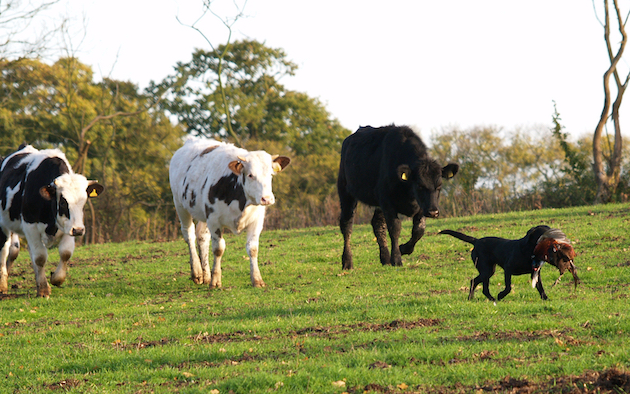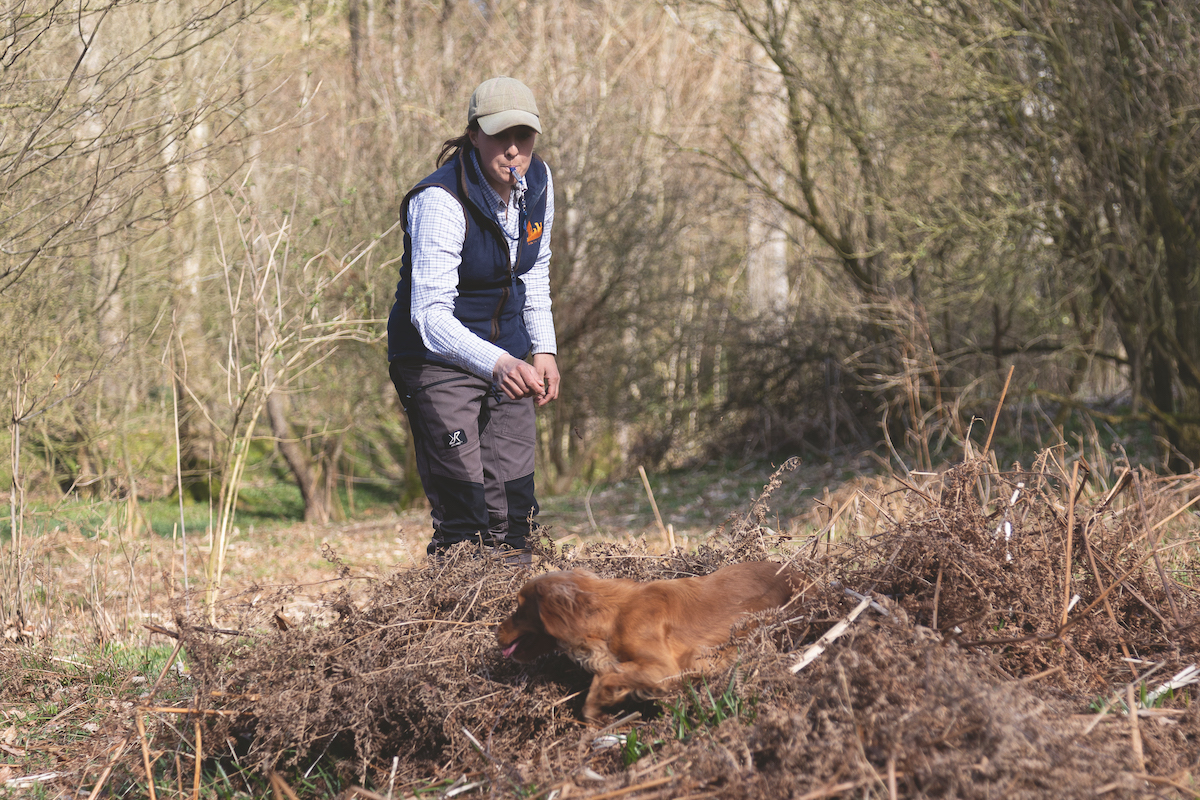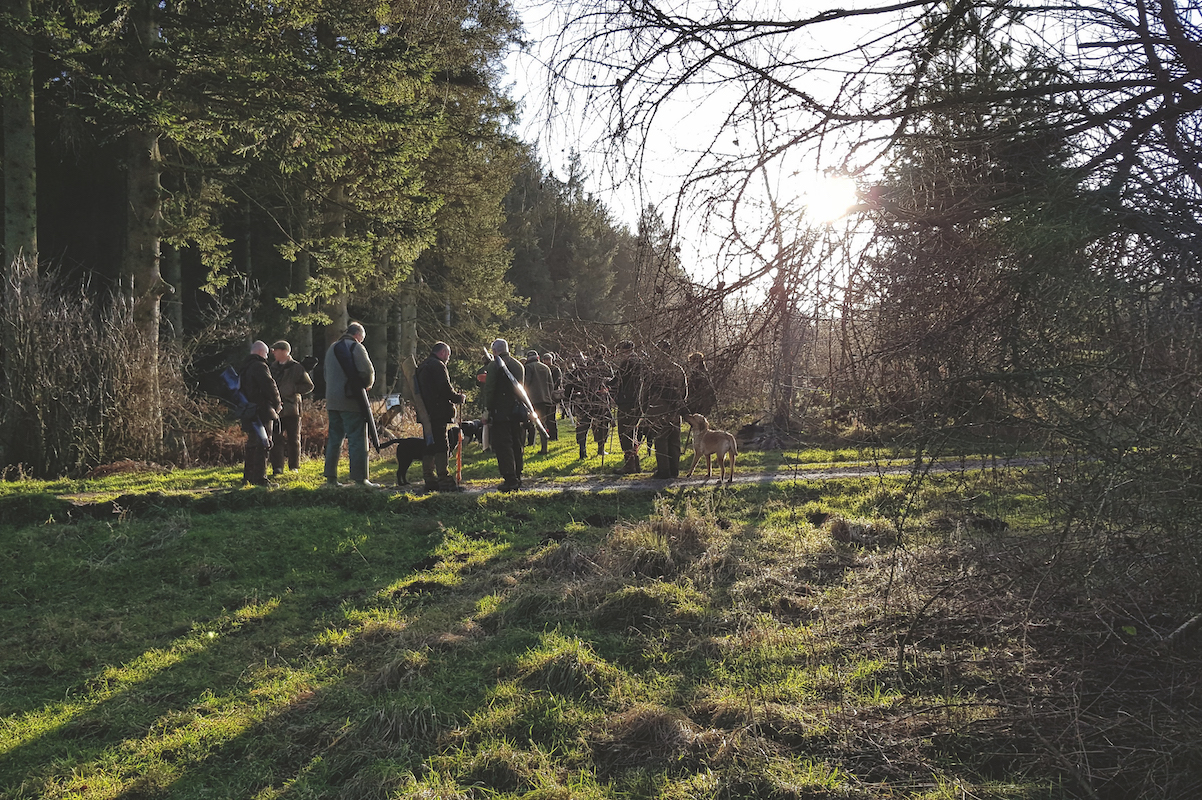How to stop your dog chasing livestock on a farm
It is vital to acclimatise your dog to farm animals so they don't chase them - with potentially fatal consequences, warns David Tomlinson

Young cattle are inquisitive animals
If you are going to work your dog on a shoot, there is one thing of which you can be certain: sooner or later you will encounter livestock.
As a responsible gundog owner, the last thing you want is for your dog to show an unhealthy interest in farm animals. Curiously, none of my many gundog training books make much mention of familiarising your dog or dogs with livestock, but it is one of the most important aspects of training.
I was reminded of this because, for the past 10 years, I haven’t had to think about livestock; my dogs weren’t interested and so were relaxed around animals. Now, as the owner of an energetic and curious seven-month-old sprocker, Emma, I am aware that she has yet to meet either sheep or cattle, though she is already steady to both chickens and horses. That is a good start, but a flock of sheep, bobbing away, is a hugely tempting target for a young dog, and at the moment I have no confidence that she won’t chase.

It’s not just the sheep that should be worried
Dogs and sheep
That’s why I am about to embark on a programme of familiarising Emma with sheep. There are a few local flocks I can introduce her to, while attached to a retracting lead that can be reined in if she does show any sign of wanting to pursue the animals. Past experience suggests that it doesn’t take long for most dogs to discover that sheep are really boring and chasing them isn’t a rewarding pastime.
One of my spaniels was walked daily as a puppy through a field of sheep and took no notice of them. However, on her first walk on Exmoor she encountered a ewe and her grown lamb and decided that they looked good for a bit of sport. Quite why she decided to chase them remains a mystery, except that a sheep on a heather moor is a very different prospect to one in a grassy paddock in Kent. But chase them she did.
Fortunately, she pursued them back towards me, so was caught in the act. Severe verbal chastisement took place and she never looked at another sheep for the rest of her life.
Dogs chasing cows
Cattle are a rather different proposition to sheep, as they have the ability to trample both you and your dog if they really want to. Every year there are tragic reports of dog walkers who have been killed by cattle, though often the dog escapes. Cattle, especially youngstock, are curious animals and the sight of a dog will often draw them to take a closer look. Danger arises when a herd crowds around you, with the animals at the back pushing those at the front. I’ve only experienced this a few times and I’ve stood my ground and waved my arms with great effect, but always be prepared to let go of your dog to make its own escape.

A dangerous situation
When working your dog around cattle, a little bovine knowledge can be invaluable. Mature dairy cattle are seldom a problem because, though they may be curious, they are usually sufficiently familiar with people not to be a threat to either you or your dog. The chances are that the farmer has a dog or two, so the cattle are probably used to dogs and aren’t too bothered by them.
Beef cows are generally docile, and mature cows are seldom a worry unless they have calves, when they can be dangerous. Beef bulls are generally amiable animals, especially if cows accompany them, but there is always the exception to the general rule, so be sensible. It is herds of young heifers or bullocks that are to be avoided, as they are the most excitable and the most inquisitive, and thus the most dangerous.
Can I legally shoot dogs destroying my animals?
My neighbour’s dogs are persistently chasing and killing my valuable rare breed poultry, and he will not control them. Have…
How to stop a dog chasing sheep and livestock
The costs of a dog chasing sheep According to Sheep Watch UK about 15,000 sheep are killed each year by…
What about pigs?
Free-range pigs are another matter altogether. I have picked-up among outdoor pigs, and my dogs have always regarded them warily, but I have never had any difficulties. When picking-up, the challenge is usually to gather any fallen birds before the pigs can get to them, as a mature sow or boar will make short work of a partridge or even a pheasant.
Unlike sheep, pigs aren’t tempting for a dog to chase, and you are more likely to have a pig chase your dog than the other way round. Pigs are both powerful and intelligent, so treat them with respect. I’ve yet to have any encounters with exotic livestock, such as alpacas and ostriches, but my research suggests that dogs and alpacas tend to get along with each other pretty well, though they are wary of dogs they don’t know.
Ostriches are birds with small brains and a very powerful kick, so keep away from them at all times.
The golden rule
Of course, the rule with all livestock is to avoid, whenever possible, any interaction between dog and beast. If in any doubt, always keep your dog on a lead, or even avoid going into a field with livestock, as it is much better to be safe than sorry.










